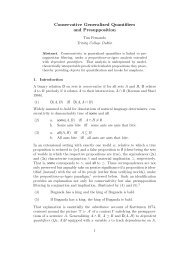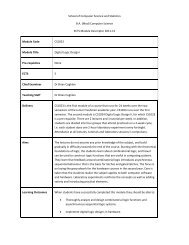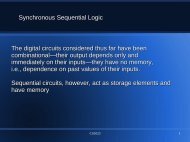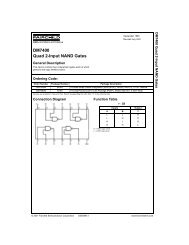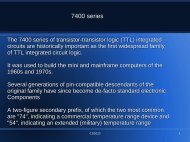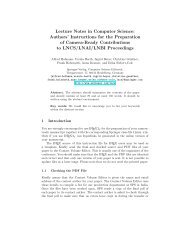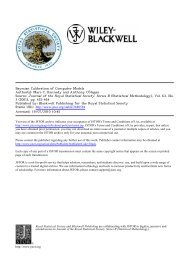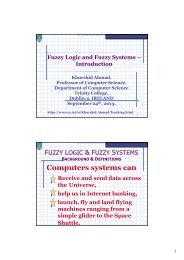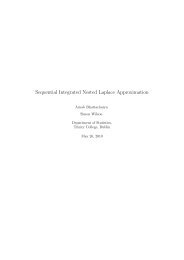Real-time Communication in Vehicular Ad Hoc Networks (VANETs)
Real-time Communication in Vehicular Ad Hoc Networks (VANETs)
Real-time Communication in Vehicular Ad Hoc Networks (VANETs)
You also want an ePaper? Increase the reach of your titles
YUMPU automatically turns print PDFs into web optimized ePapers that Google loves.
messages, with vary<strong>in</strong>g transmission powers for each. For example, <strong>in</strong> [8] the<br />
authors use a comb<strong>in</strong>ation of low-frequency long-range <strong>in</strong>frastructure-based<br />
communications and high-frequency vehicle–to-vehicle communication <strong>in</strong><br />
order to accommodate the vary<strong>in</strong>g delivery requirements for each message<br />
type.<br />
FCC rul<strong>in</strong>g def<strong>in</strong>es DSRC have six service channels and one control channel.<br />
The control channel is to be regularly monitored by all vehicles. Safety<br />
message is denoted to highest priority. [3]<br />
In mobile <strong>Ad</strong> <strong>Hoc</strong> network, there are two k<strong>in</strong>ds of nodes – exposed nodes<br />
which are with<strong>in</strong> the <strong>in</strong>terference range of each other, and hidden nodes<br />
which are out of <strong>in</strong>terference range. The number of exposed nodes impacts<br />
network throughput. We can <strong>in</strong>crease the network throughput not only by<br />
<strong>in</strong>crement<strong>in</strong>g the number of nodes, but also enlarg<strong>in</strong>g the network size while<br />
keep<strong>in</strong>g traffic load constant [1].<br />
However, the number of exposed nodes is related with radio range. S<strong>in</strong>ce the<br />
<strong>in</strong>terference radius is proportional to the radio range, <strong>in</strong>creas<strong>in</strong>g the radio<br />
range to <strong>in</strong>crease l<strong>in</strong>k stability, path life, or network connectivity will decrease<br />
the network throughput. On the other hand, directional antennae could be<br />
used to reduce the <strong>in</strong>terference range. In this way, a transmission <strong>in</strong>terferes<br />
only with nodes <strong>in</strong> the direction of the transmission. However, directional<br />
antennas <strong>in</strong>crease the number of hidden nodes and have an adverse affect on<br />
<strong>in</strong>trusion-detection systems. [9]<br />
16




